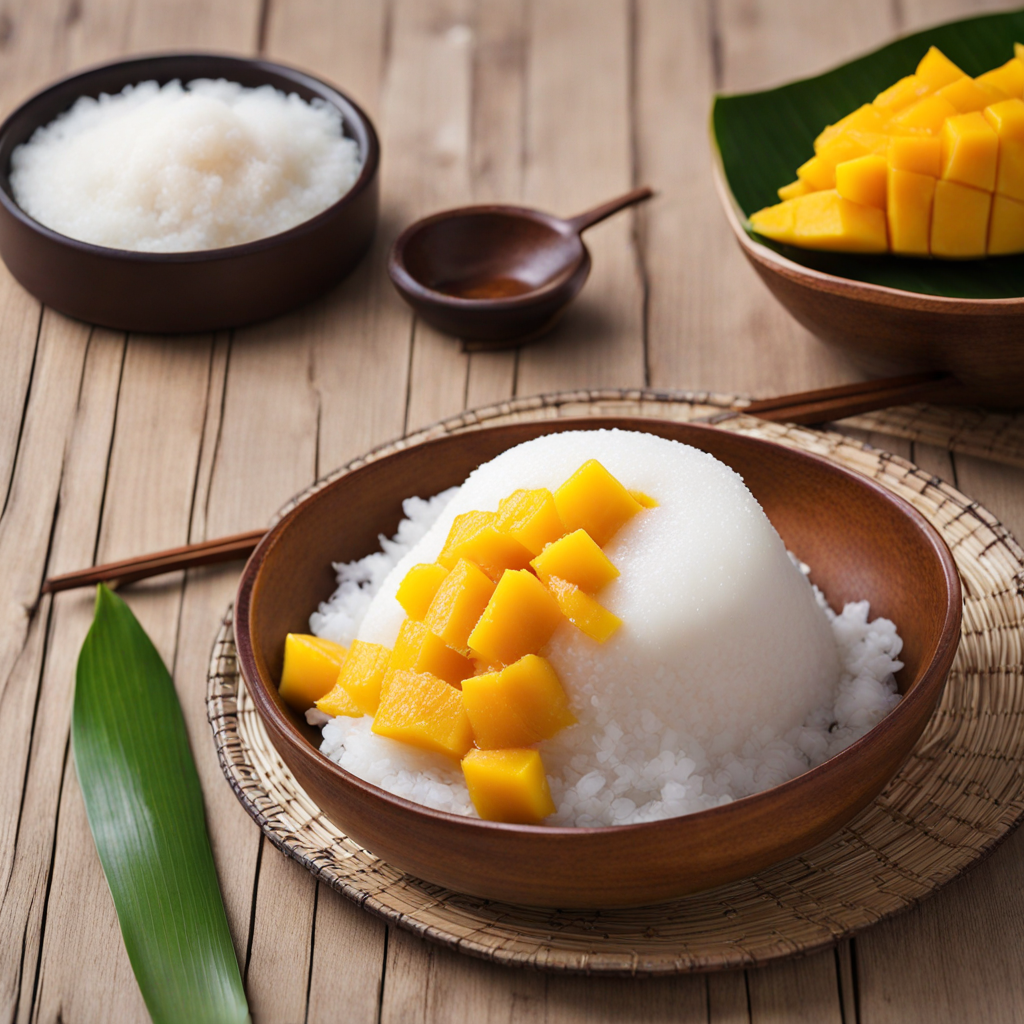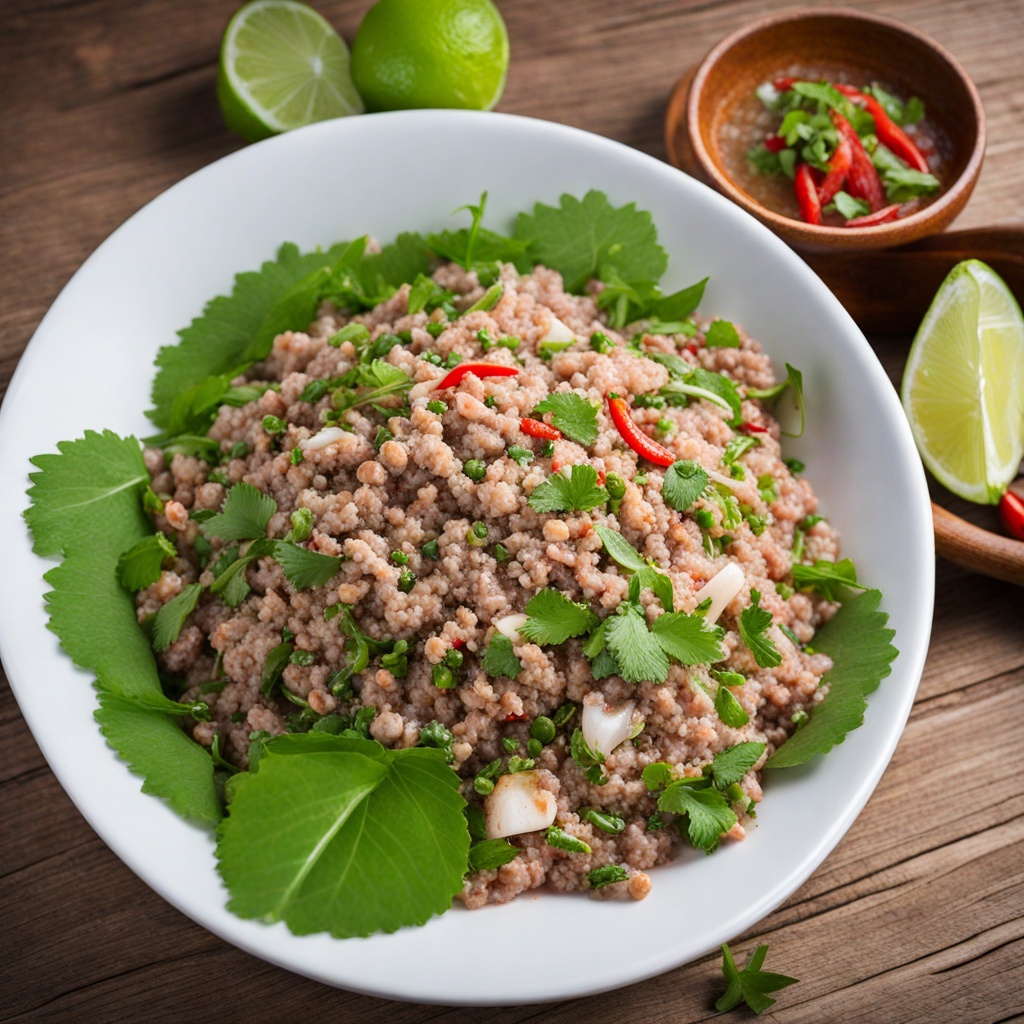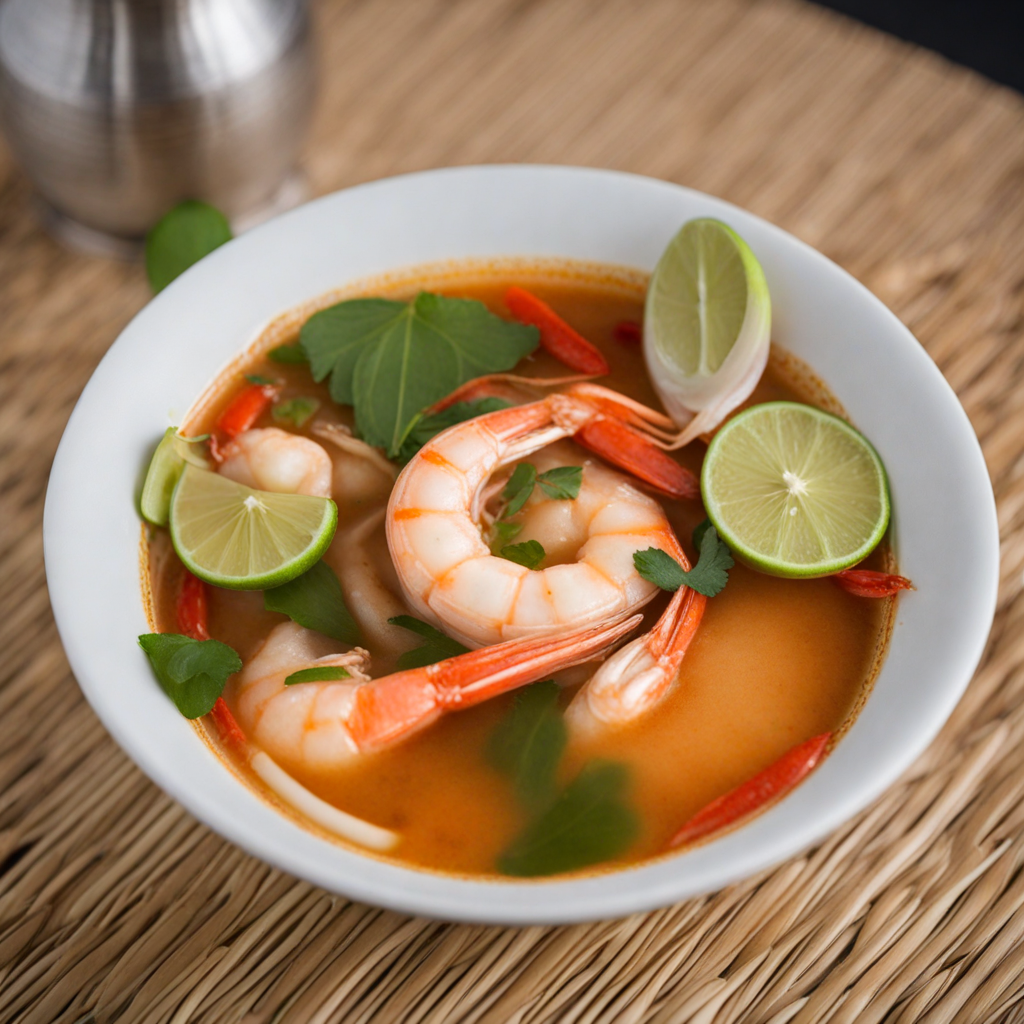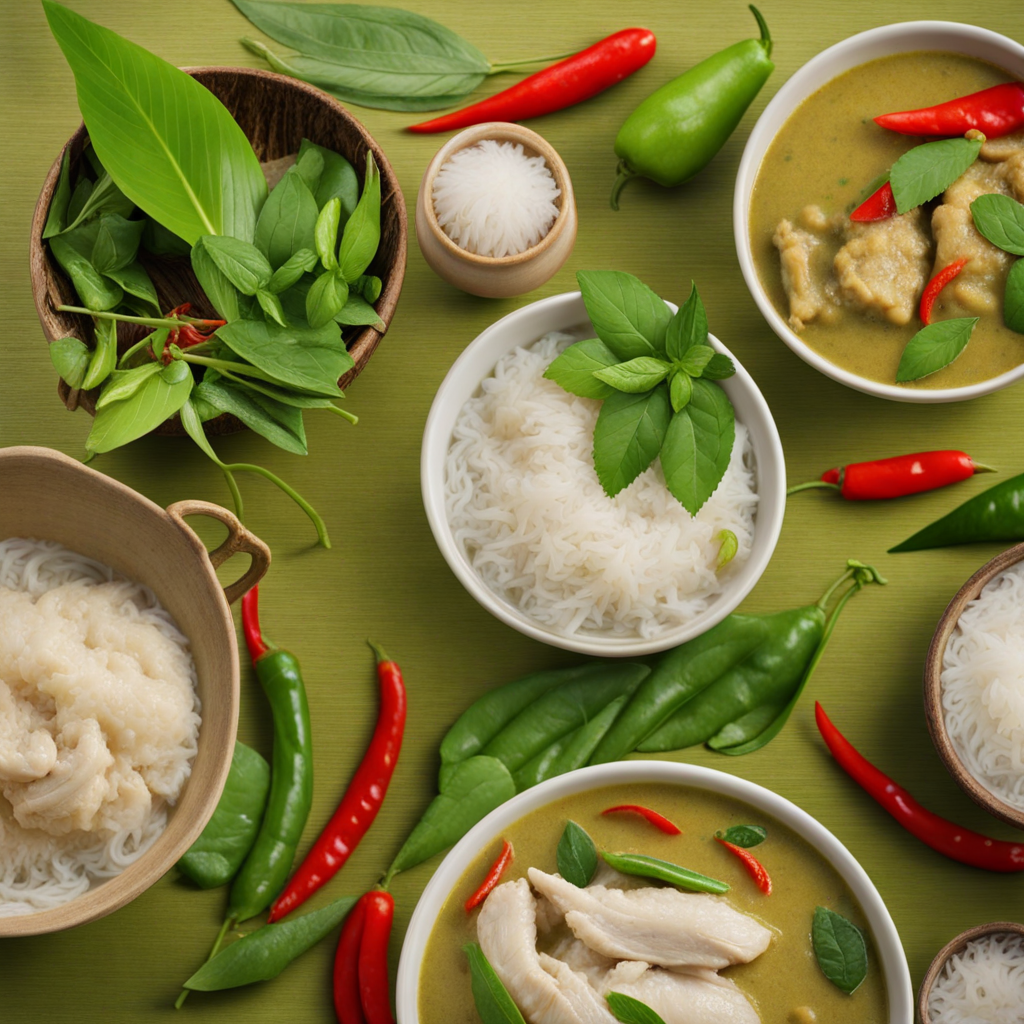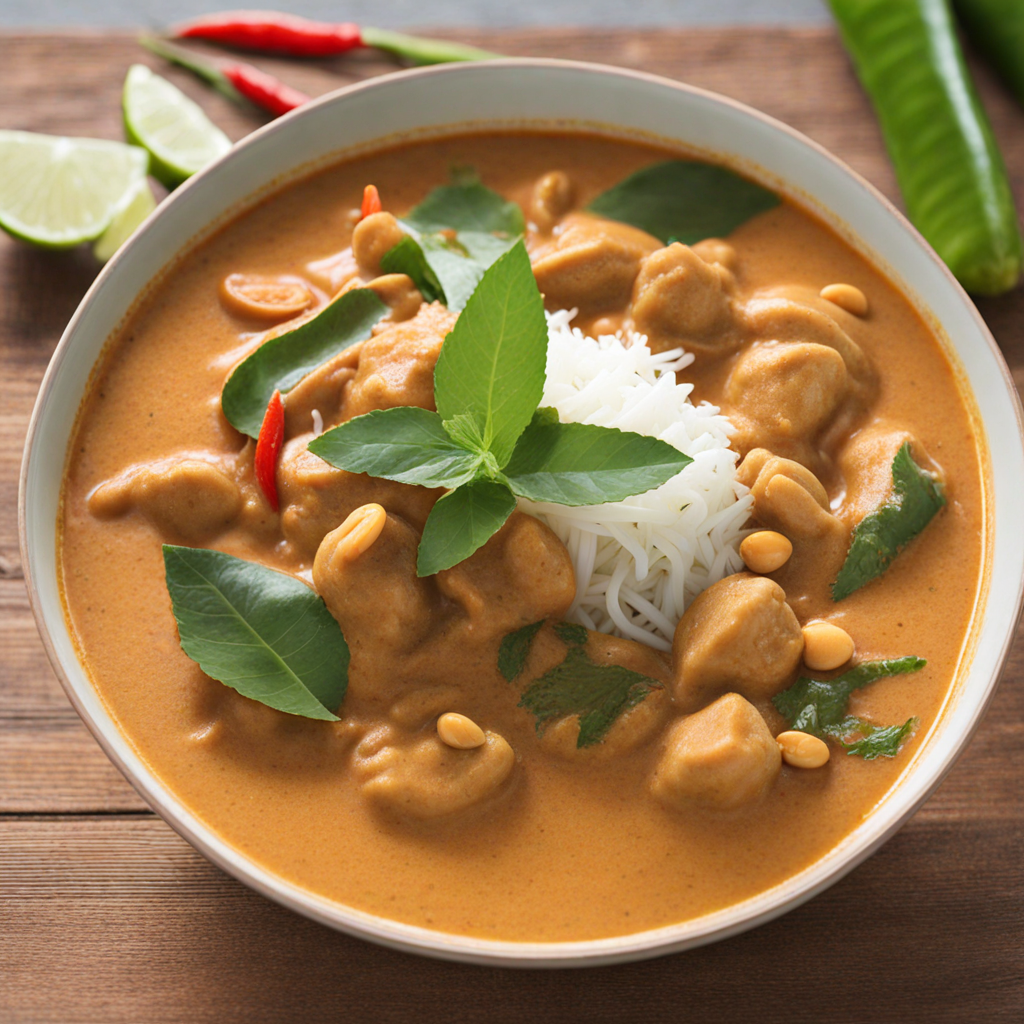Sticky Rice with Mango
Sticky Rice with Mango is a delightful Thai dessert that captures the essence of Thailand's vibrant culinary culture. This dish features glutinous rice, commonly known as sticky rice, which is steamed to perfection, resulting in a chewy and slightly sweet texture. The rice is often mixed with coconut milk, giving it a creamy richness that perfectly complements the dish's other components. The sticky rice serves as a base, providing a satisfying contrast to the fresh fruit that accompanies it. Fresh mango slices, typically ripe and juicy, are the star of this dessert. Their natural sweetness and bright, sunny color add a refreshing element that balances the richness of the coconut-infused rice. Thai mangoes are known for their unique flavor profile, which varies from mildly sweet to intensely fragrant, depending on the variety. The combination of the luscious mango and the sticky rice creates a harmonious blend of flavors that is both comforting and indulgent. To elevate the experience, Sticky Rice with Mango is often finished with a drizzle of sweetened coconut cream on top, which adds an extra layer of decadence. Some variations may include a sprinkle of toasted sesame seeds or mung beans for added texture and nutty flavor. Served warm or at room temperature, this dessert is a perfect way to end a meal or simply enjoy as a delightful snack. It's a true testament to the balance of flavors and textures that Thai cuisine is celebrated for, making it a must-try for anyone looking to explore new taste sensations.
How It Became This Dish
The Sweet History of ข้าวเหนียวมะม่วง: A Thai Delight Origins in Ancient Thailand The delightful dessert known as ข้าวเหนียวมะม่วง (khao niew mamuang), or sticky rice with mango, has deep roots in Thailand’s culinary history. The dish is a perfect marriage of flavors and textures—sweet, creamy, and slightly salty—all wrapped up in a vibrant presentation. Sticky rice has been a staple in Thai cuisine for centuries, with origins that can be traced back to the ancient wet rice cultivation practices in the region. This agricultural innovation, which began around 2000 years ago, set the stage for sticky rice to become a primary food source in northern and northeastern Thailand. The cultivation of glutinous rice (the type used in khao niew mamuang) is particularly prominent in the Isan region of Thailand, where the soil and climate create ideal conditions for growing this unique variety. The rice itself is often associated with the cultural identity of the people in the region, forming the backbone of their daily meals and festive occasions. The Mango Connection Mangoes, too, have a rich history intertwined with Thai culture. Believed to have originated in South Asia, mangoes spread throughout Southeast Asia and became a beloved fruit in Thailand. The sweet, juicy flesh of the mango complements the sticky rice beautifully, creating a perfect balance between the two. The variety most commonly used in khao niew mamuang is the Nam Dok Mai, known for its fragrant aroma and exceptional sweetness. This mango is often considered the crown jewel of Thai fruits and has been cultivated in the country for centuries. Cultural Significance Khao niew mamuang is more than just a dessert; it embodies the essence of Thai culinary philosophy, which emphasizes balance and harmony. The dish is especially popular during the summer months, coinciding with the mango harvest, and is served during festivals, celebrations, and family gatherings. It represents the bounty of the land, showcasing the seasonal fruits that Thailand has to offer. In Thai culture, food plays a vital role in social interactions and rituals. Khao niew mamuang is often enjoyed during auspicious occasions, such as weddings, birthdays, and religious ceremonies. Its colorful presentation, typically served on a banana leaf, makes it a feast for the eyes as well. The dish also reflects the spirit of sharing and togetherness, as it is often presented in large trays for family and friends to enjoy together. Development Over Time The evolution of khao niew mamuang into a widely recognized dish can be traced back to the 20th century. While variations of sticky rice with mango likely existed long before, it was during this period that the dish began to gain prominence beyond local homes and markets. The post-World War II era saw an increase in tourism and the establishment of street food culture in Thailand, bringing traditional dishes to a broader audience. Street food vendors started to pop up in cities like Bangkok, where khao niew mamuang became a popular choice among locals and tourists alike. The dish's simplicity and affordability made it accessible to everyone, while its unique combination of flavors captured the hearts of people from all walks of life. As international travel increased, tourists brought their experiences back home, helping to elevate khao niew mamuang to an iconic status in the global culinary landscape. In the 21st century, khao niew mamuang has found a place on menus in high-end restaurants and cafes, showcasing the versatility of traditional Thai ingredients. Chefs have taken the dish to new heights, experimenting with various elements such as coconut cream, flavored sticky rice, and even creative presentations. While the essence of khao niew mamuang remains unchanged, these modern adaptations highlight the dish's ability to evolve while honoring its roots. The Ingredients Behind the Magic The preparation of khao niew mamuang involves a few key ingredients: glutinous rice, fresh ripe mangoes, coconut milk, sugar, and salt. The sticky rice is soaked overnight and then steamed until it reaches a chewy, tender consistency. Meanwhile, the coconut milk is gently heated and mixed with sugar and salt to create a rich and creamy sauce. The combination of these elements is what makes khao niew mamuang such a beloved dessert. Traditionally, the dish is served warm, with the sticky rice placed on a plate, drizzled with the sweetened coconut sauce, and accompanied by slices of ripe mango. Some variations also include toasted sesame seeds or mung beans sprinkled on top for added texture and flavor. This simple yet elegant presentation makes khao niew mamuang not only a treat for the taste buds but also a visual delight. Global Popularity In recent years, khao niew mamuang has gained global recognition, appearing in Thai restaurants around the world. Its reputation has been bolstered by food blogs, social media platforms, and cooking shows, which showcase the dish’s vibrant colors and appealing presentation. The dessert has also inspired innovative twists, with chefs experimenting with fusion elements, such as serving it with ice cream or incorporating matcha flavoring. The rise of the Thai street food movement has further propelled khao niew mamuang into the culinary spotlight. Food festivals and events dedicated to Thai cuisine often feature this dish, highlighting its cultural significance and culinary heritage. As travelers seek authentic experiences, khao niew mamuang has become a must-try item on many itineraries, representing the sweet taste of Thailand. Conclusion Khao niew mamuang is a testament to Thailand's rich culinary heritage, blending the agricultural bounty of the land with centuries-old traditions. This beloved dessert, with its simple yet profound flavors, reflects the essence of Thai culture—community, celebration, and a deep appreciation for seasonal ingredients. As it continues to evolve and gain popularity worldwide, khao niew mamuang remains a cherished symbol of Thailand's vibrant food scene, inviting all to indulge in its sweet, sticky goodness. Whether enjoyed at a bustling street food stall or a fine dining establishment, this delightful dish encapsulates the heart and soul of Thai cuisine, making it a timeless favorite for generations to come.
You may like
Discover local flavors from Thailand


